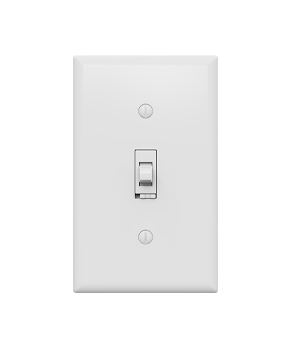The Ultimate Guide to Smart Switches Without Neutral Wires
This article will walk you through what a smart switches without neutral wire is, how it works, and what options are available to you.
Understanding Smart Switches Without Neutral Wire
When it comes to smart lighting solutions, many modern smart switches are designed to work with a neutral wire. The neutral wire acts as a return path for electricity, providing a continuous flow of power that keeps smart switches connected, even when the light is off. However, homes built before the 1980s often lack a neutral wire in the switch box, making it challenging to install standard smart switches.
A smart switch without a neutral wire is specifically designed to function without this component, making it an ideal solution for homes that have older electrical setups. These switches use alternative methods, such as capacitive coupling or innovative electronics, to maintain the necessary power for wireless communication and control.
Why Are Neutral Wires Important for Smart Switches?
First of all, it’s essential to understand why many smart switches need a wire in the first place. The neutral wire provides a complete circuit for continuous electricity flow. Since smart switches need a small amount of power to maintain Wi-Fi or Zigbee connectivity, they require this flow even when the light is switched off. Without a wire, many traditional smart switches can’t function properly, as they wouldn’t be able to stay connected.
However, with advances in technology, manufacturers have developed smart switches that either use other components to maintain that power or bypass the need altogether.
Benefits of Smart Switches Without Neutral Wire
Smart switches that do not require a neutral wire come with several key benefits, making them an attractive option for homeowners:
1. No Need for Rewiring
The most significant benefit is that these smart switches can be installed without having to rewire your home. For older houses, rewiring can be costly and time-consuming. With no-neutral smart switches, you get to experience the convenience of smart home technology without the hassle.
2. Convenient Control
These switches give you the ability to control your lights remotely. Imagine you’ve just settled into bed, and you realize you left the hallway lights on. With a smart switch, you can easily turn off the lights using your smartphone or voice control. Smart switches without a neutral wire offer the same level of convenience as their traditional counterparts.
3. Compatibility with Existing Fixtures
Additionally, smart switches without a neutral wire are generally compatible with older light fixtures. This means you don’t have to replace your existing lighting, which can save on costs while still giving you advanced smart home control features.
How to Install a Smart Switches Without a Neutral Wire
Before installing any smart switch, make sure to read the instructions that come with the product. Here are some general steps that will guide you through the process:
- Turn Off the Power: Safety first! Make sure to turn off the power at the circuit breaker before beginning any installation work.
- Remove the Existing Switch: Carefully remove your old switch and take note of the wiring setup. If there’s no neutral wire present, you can proceed with installing a no-neutral smart switch.
- Install the Smart Switch: Connect the wires according to the manufacturer’s instructions. Usually, this will involve connecting the line, load, and ground wires.
- Mount and Test: Once the wires are securely connected, mount the smart switch back into the wall, restore power, and test the switch to ensure it functions as intended.
Challenges to Consider
While smart switch without neutral wire are convenient, they do come with some challenges:
- Limited Options: There are fewer choices when it comes to smart switches that don’t require a neutral wire compared to traditional models. This means you may have to shop around a bit more to find a compatible solution.
- Dimmable Lights: Some no-neutral smart switches may not be compatible with dimmable lights or certain types of bulbs. It’s important to check the specifications to ensure compatibility.
- Power Draw Limitations: Since these switches don’t have a continuous power flow via a neutral wire, they may sometimes have limitations on the types of lights they can control effectively, especially if the bulbs have low power consumption.
Conclusion
In summary, smart switch without neutral wire offer a practical and convenient solution for homeowners who want to upgrade their lighting without extensive electrical work. Whether you’re looking for enhanced convenience, easy installation, or compatibility with your existing fixtures, there are a number of options available that can make your smart home dream a reality.
So, don’t let the lack of a neutral wire stop you from making your home smarter. Explore the possibilities, choose the right smart switch for your setup, and experience the convenience of modern smart lighting solutions.



